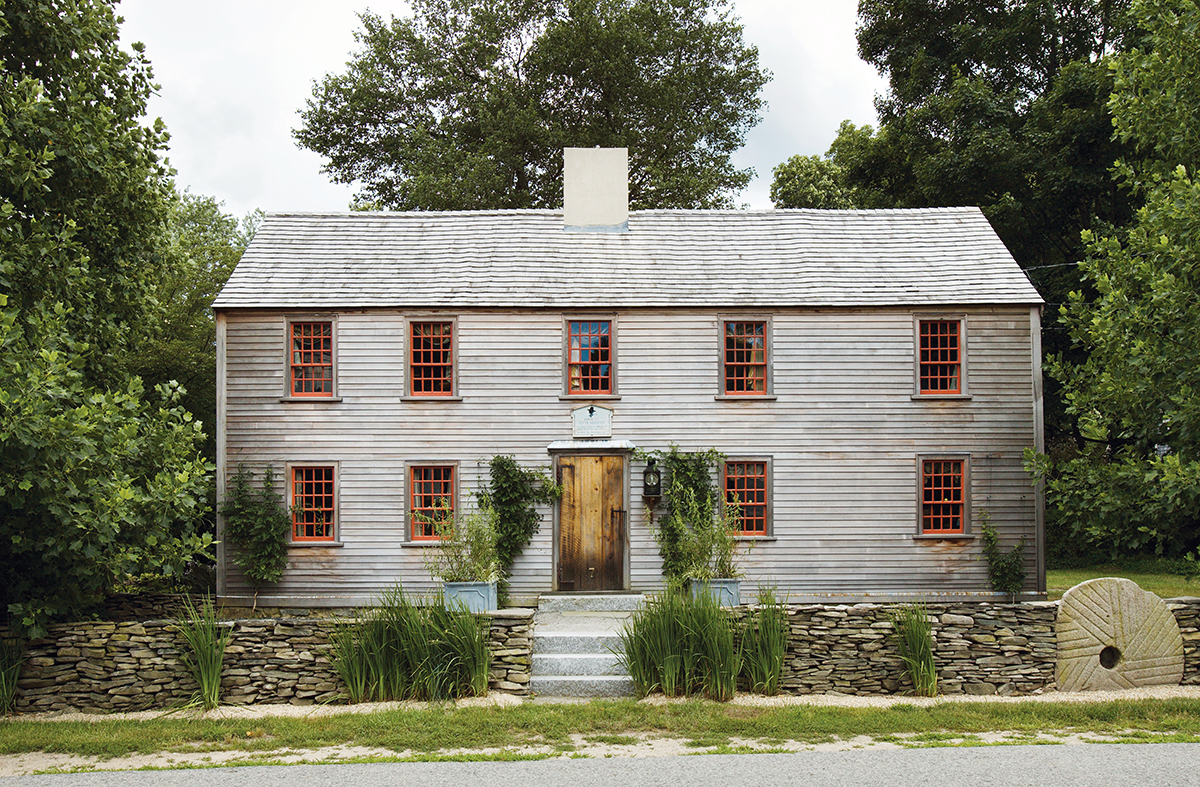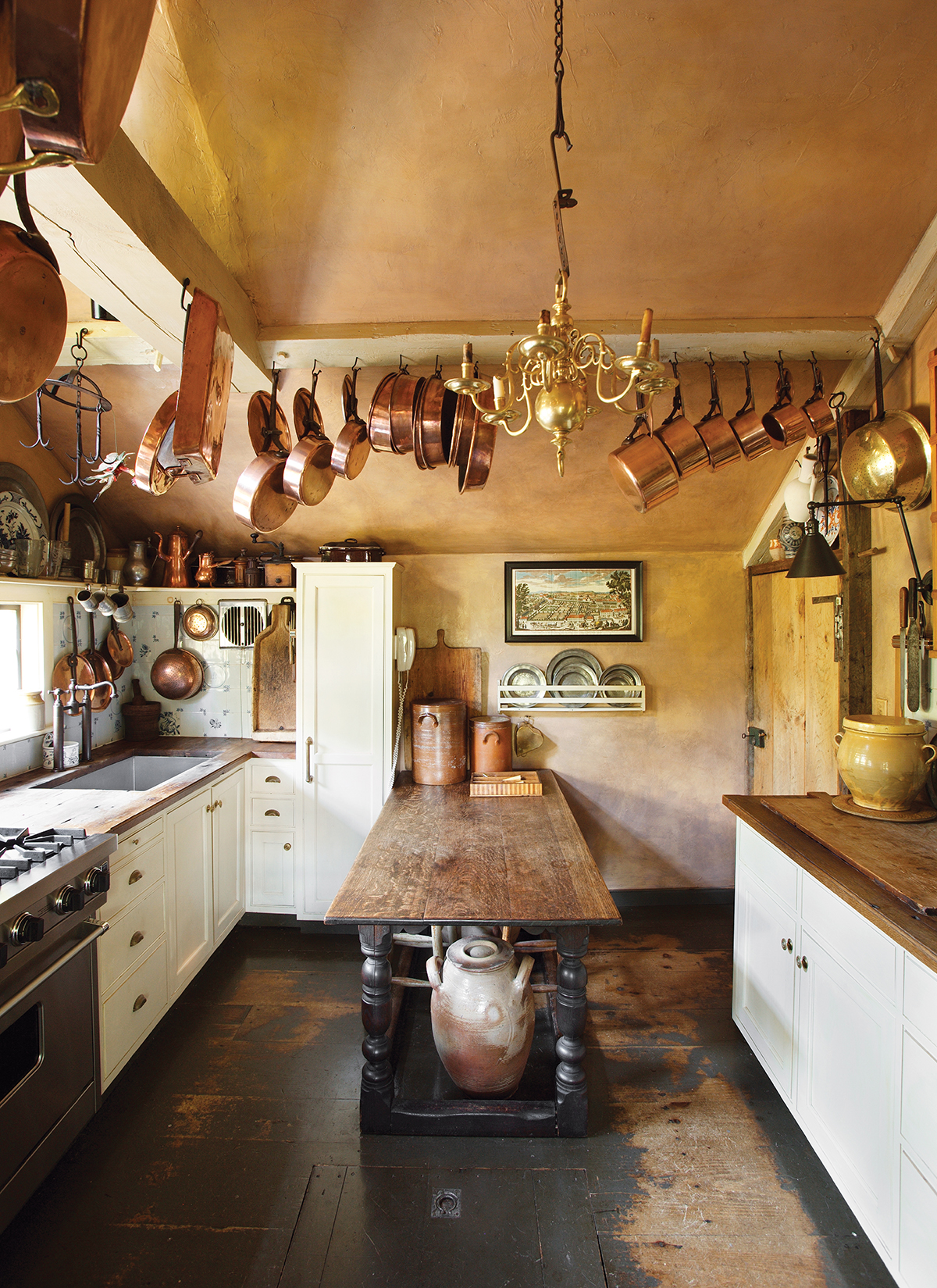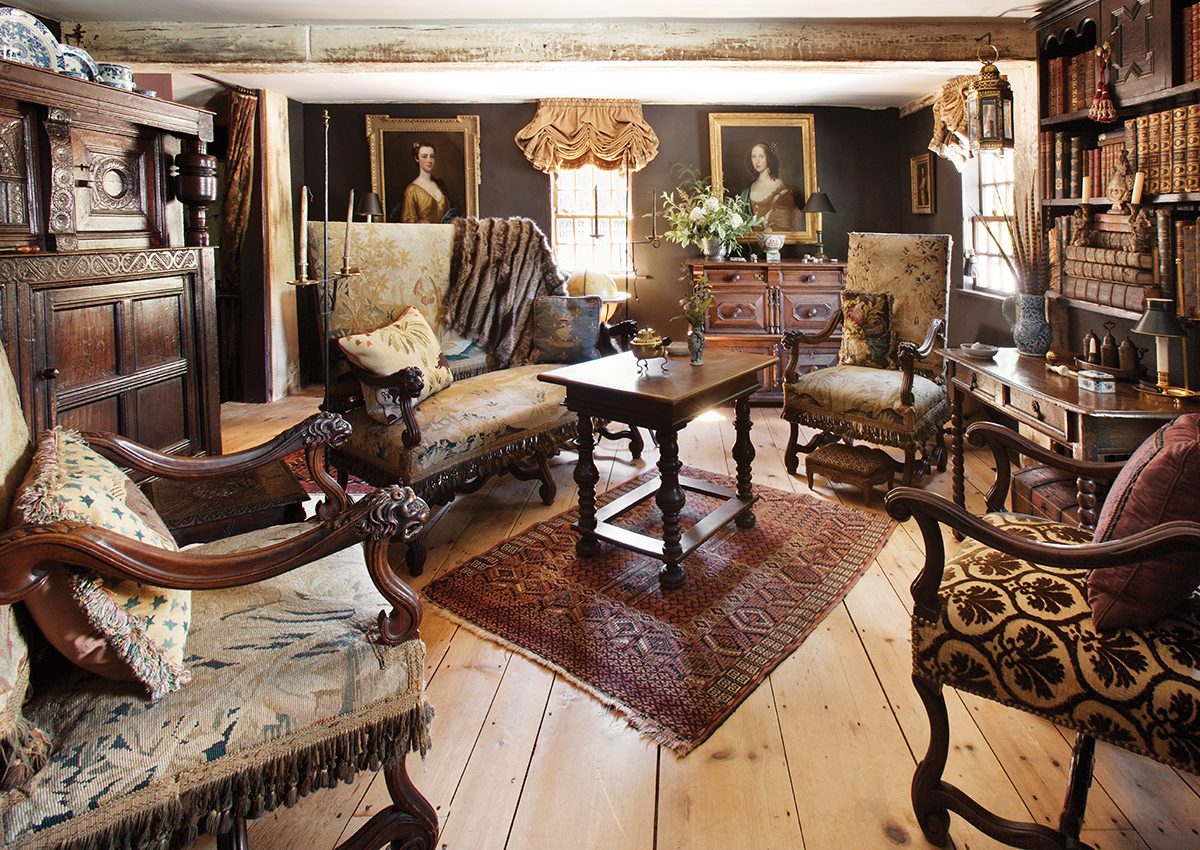Aged to Perfection
 THE TINY, ANCIENT HOUSE sits on a back road in a small town.
THE TINY, ANCIENT HOUSE sits on a back road in a small town.
It’s uncomfortably close to the street, the way houses built almost three centuries before pavement and automobiles often are. It looks hunkered down for the ages, with Puritanical windows and a solid front door. But then owner Bill Towne steps out to greet me, flanked by two corgis. He beckons, stepping into a closet-size entry hall with ceilings so low that I instinctively stoop.
Towne lives here with his partner, interior designer Alan Collachicco, and together they are architectural saviors. Over the past four decades, they have restored 18th-century houses in Charlestown and Newburyport — and a 17th-century house in Georgetown — with old-world treasures, inherited china, rare books, and a touch of artifice. “These houses are quirky; nothing is perfectly square,” says Collachicco, explaining his passion for elderly manses. “But they have a soul. They’ve been witness to many lives. It engulfs you; you’re part of something.”
All of this is made clear by the parlor of their home. In the low, diminutive room, everything is oversize — the gold-framed formal portraits, the enormous Dutch court cupboard from 1668, the Italian Renaissance Revival chairs upholstered in velvet — but somehow it works. Usually, American houses from this era (1655, in this case) are done up in Colonial garb, with nothing inside but a few ladder-back chairs and thin tapers. “Some people would fill homes like this with early American furniture,” says Collachicco, reading my thoughts. “I love it, I respect it, but I don’t want to live with it.”
He employs a different approach, and he’s developed a narrative to match: “This is a first-period house, but the people who commissioned it got off a boat from somewhere else,” he says. “I like to imagine that they furnished it with the things they brought from the old country. There was nothing here to copy yet, so the lifestyle was European.” He walks into the dining room, with its red-velvet chairs, Civil War–era china, and mysterious murals.
“They couldn’t bring their tapestries, so itinerant artists painted the walls to look like the things they’d seen back home,” Collachicco says, gesturing to a panel depicting a llamalike creature in a garden, reminiscent of the famous unicorn tapestries at the Metropolitan Museum of Art.
The truth is, it was these “painted tapestries” that brought me to see this house in the first place: I’d admired the exceptional work of North Shore artist Julia Purinton of Medusa Studio and wanted to see her paintings in situ.
Another series of Purinton murals grace the second-floor landing; they feature thick floral borders and the requisite challenged perspective, both hallmarks of medieval art. When Purinton finished the paintings, Collachicco artificially aged them. He lightly sanded each, then applied a clear varnish, added glazes of numerous shades, and lastly, rubbed them with tinted paste wax.
In keeping with Collachicco’s story, the pair furnished the house with their Dutch and northern German antiques, then spent years tearing out bad renovations, false walls, paneling and doors. Because little of the original interior was left when they bought the home, they were free to modify it as they saw fit — removing a chimney here, redoing a fireplace surround there. Then they aged the walls using the same technique they’d developed for Purinton’s murals. Above a candlestick sconce in the kitchen, Collachicco smudged black charcoal onto the ceiling for a flame-licked effect. Other whimsical touches include doors decorated with book spines to look like bookshelves, and a trompe l’oeil mural with a corgi that decorates the garage wall facing the garden (also by Purinton).
Outside, the couple created a low hedge maze based on a landscape plan drawn in the 17th century for the bishop of Chantilly. Adjacent to the maze is a lovely kitchen garden, where they grow asparagus, heirloom tomatoes, eggplant, strawberries, rhubarb, and three kinds of potatoes. “The hardest thing in these old houses is adding modern plumbing,” says Collachicco, who carved out space for a master bathroom on the second floor by removing a closet. Just don’t hit your head on the supporting beam that divides the commode from the tub area.
I didn’t know much about Towne and Collachicco before coming to the house. But after my visit, and after hearing several references to “the boat,” I wondered: Had Towne’s ancestors arrived on the Mayflower? Research revealed that Towne is a descendant of Francis Cooke, the 17th signer of the Mayflower Compact. Towne’s other ancestors also came over from England on a boat — not the Mayflower, but the Rose, in 1637. Sadly, Rebecca (Towne) Nourse and Mary (Towne) Esty, both born in Europe, were hanged in Salem in 1692 for witchcraft. Chilling as history can be, this antique home is the real New England, and its storied past belongs here, perfectly preserved, in the present.
Photographs By Bob O’Connor